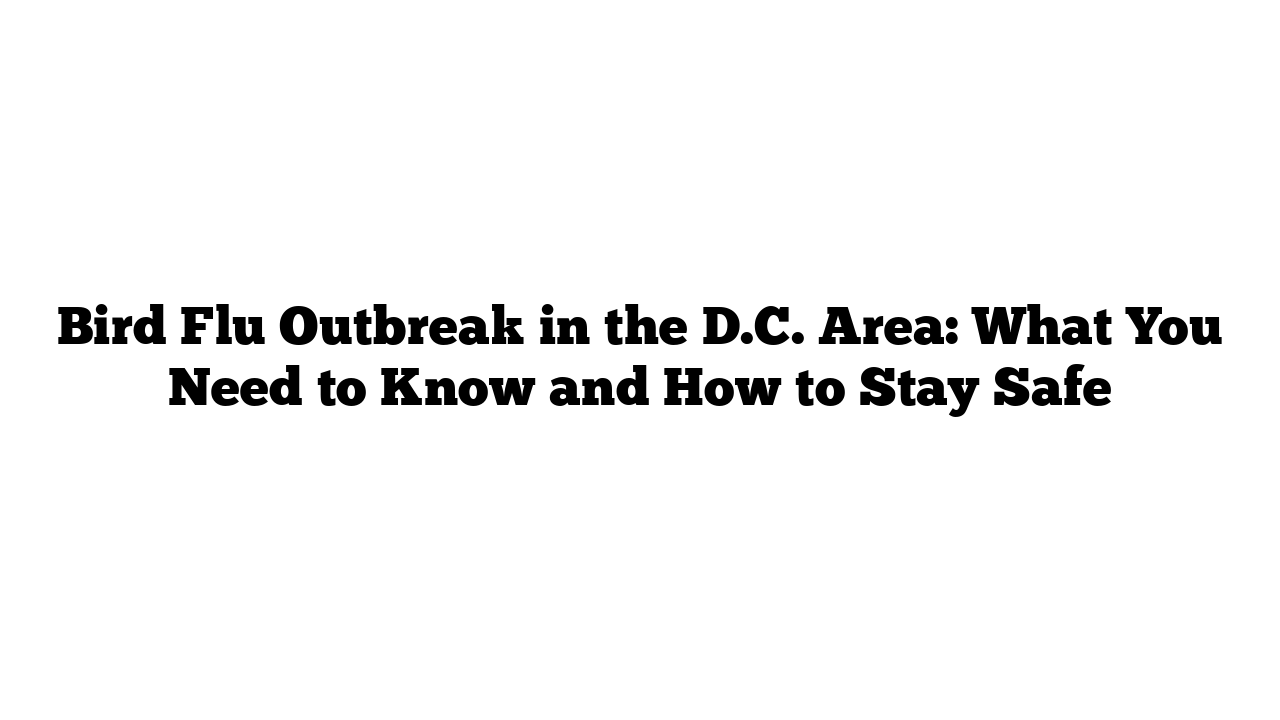The recent detection of highly pathogenic avian influenza (HPAI) in poultry across Maryland, Delaware, and other parts of the East Coast has raised concerns about public health and agricultural security. With the first case in Maryland chickens since 2023, experts and officials are working to contain the outbreak and minimize its impact.
This article explores the current situation, the risks to humans and animals, and the steps you can take to stay informed and protected.
What Is Avian Influenza?
1. Understanding Bird Flu
Avian influenza, or bird flu, is caused by influenza viruses that primarily affect birds but can occasionally infect humans and other animals. The current strain, HPAI, is particularly dangerous due to its high mortality rate in poultry.
2. How Does It Spread?
Bird flu spreads through direct contact with infected birds, contaminated equipment, or exposure to surfaces containing the virus. Migratory birds often carry the virus across regions, increasing the likelihood of outbreaks.
The Current Outbreak in the D.C. Area
1. Detection in Maryland and Delaware
In January 2025, preliminary testing confirmed HPAI in Caroline County, Maryland. This marks the first confirmed case in Maryland chickens since 2023. Delaware has also reported cases, signaling a broader regional issue.
2. Additional Cases Across the East Coast and Midwest
Other states, including those in the Midwest, have reported outbreaks. These cases underline the highly contagious nature of the virus and its ability to spread rapidly across large areas.
3. Impact on Poultry Farms
The outbreak has led to the culling of thousands of birds to prevent further spread. This is a significant blow to poultry farmers, who face economic losses and supply chain disruptions.
Risks to Humans and Pets
1. Human Infection
While the risk of human infection remains low, it is not zero. People in close contact with infected birds or contaminated environments are at higher risk.
2. Symptoms in Humans
Symptoms of avian flu in humans can range from mild flu-like symptoms to severe respiratory illness. Early detection and medical care are critical for recovery.
3. Risks to Pets
Pets, especially cats and dogs, can contract the virus if they come into contact with infected birds or contaminated materials. Keeping pets away from wild birds and poultry farms is essential during an outbreak.
What Is Being Done to Contain the Outbreak?
1. Government Actions
State and federal agencies are working to identify and isolate affected farms. Measures include testing birds, culling infected flocks, and increasing biosecurity protocols.
2. Public Awareness Campaigns
Authorities are urging the public to report sick or dead birds and to follow guidelines for handling poultry and eggs.
Protecting Yourself and Your Community
1. Avoid Contact with Wild Birds
Limit your exposure to wild birds, especially waterfowl, which are known carriers of the virus.
2. Proper Hygiene
Wash your hands thoroughly after handling poultry or eggs. Clean and disinfect surfaces that come into contact with raw poultry.
3. Cook Poultry Thoroughly
Ensure that poultry and eggs are cooked to an internal temperature of at least 165°F (74°C) to kill any potential virus.
How to Protect Your Pets
- Keep Them Indoors: Limit your pet’s exposure to wild birds.
- Monitor Their Health: Watch for unusual symptoms like lethargy or coughing.
- Consult a Vet: If you suspect your pet has been exposed to the virus, contact a veterinarian immediately.
Learning from Past Outbreaks
1. Lessons from 2023
The 2023 bird flu outbreak highlighted the importance of quick action and robust biosecurity measures. Farms that implemented strict protocols were able to limit the spread.
2. Ongoing Research
Scientists are studying the virus to develop better vaccines for poultry and potentially humans.
Staying Informed
For the latest updates on the bird flu outbreak and health tips, visit medicaltimes.io. Other trusted resources include:
- Centers for Disease Control and Prevention (CDC)
- World Health Organization (WHO)
- United States Department of Agriculture (USDA)
FAQs About the Bird Flu Outbreak
- What is bird flu?
Bird flu is an influenza virus that primarily affects birds but can sometimes infect humans and other animals. - Is bird flu dangerous to humans?
While rare, bird flu can cause severe illness in humans. It is most dangerous for those in close contact with infected birds. - Can pets get bird flu?
Yes, pets like cats and dogs can contract bird flu if exposed to infected birds or contaminated environments. - How can I protect myself from bird flu?
Avoid contact with wild birds, practice good hygiene, and cook poultry and eggs thoroughly. - Is it safe to eat poultry during an outbreak?
Yes, as long as poultry and eggs are cooked to a safe temperature of 165°F (74°C). - What are the symptoms of bird flu in humans?
Symptoms include fever, cough, sore throat, and in severe cases, respiratory distress. - How does bird flu spread?
The virus spreads through direct contact with infected birds, their droppings, or contaminated surfaces. - What should I do if I find a dead bird?
Report it to local wildlife authorities. Do not handle it without proper precautions. - Are there vaccines for bird flu?
Vaccines exist for poultry, and researchers are working on vaccines for humans. - What steps is the government taking?
Authorities are testing birds, culling infected flocks, and increasing biosecurity measures to contain the outbreak.
